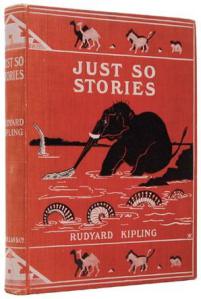 “Just-so stories” are named after Rudyard Kipling’s 1902 book of animal fables. Image courtesy of Wikimedia Commons.
“Just-so stories” are named after Rudyard Kipling’s 1902 book of animal fables. Image courtesy of Wikimedia Commons.
Sloth-moth symbiosis. Dinosaur-devestating asteroid impacts. Girl’s preference for pink. Are these fact, or fiction?
Sometimes, what we think we know about the natural world is based more on story-telling than the scientific method. Calling something a “just-so story” in science is almost universally intended as a criticism. The term is a reference to Rudyard Kipling’s collection of children’s fables that playfully use species traits as a framework for teaching kids important life lessons. “How the Rhinoceros Got His Skin,” “How the Leopard Got His Spots,” and “How the Camel Got His Hump” offer moral, rather than scientific, explanations for evolution. They’re entertaining, but not factually accurate (hence the pejorative).
In science, just-so stories are compelling because they’re simple, elegant, intuitive, and fun to tell. Ecology and evolution seem to be especially susceptible to just-so narratives, as researchers struggle to attribute the patterns…
View original post 708 more words
